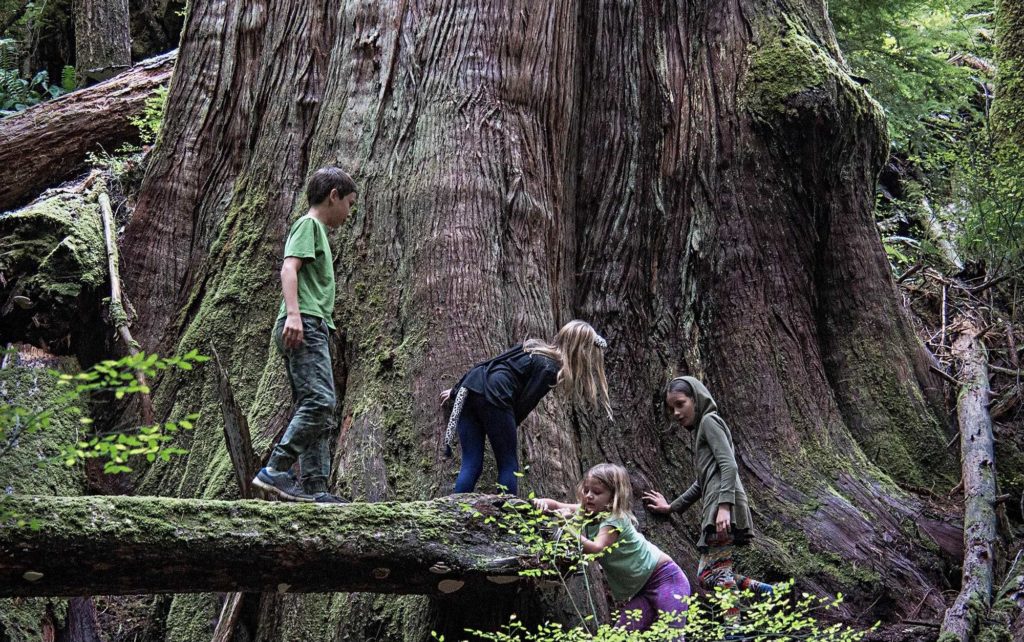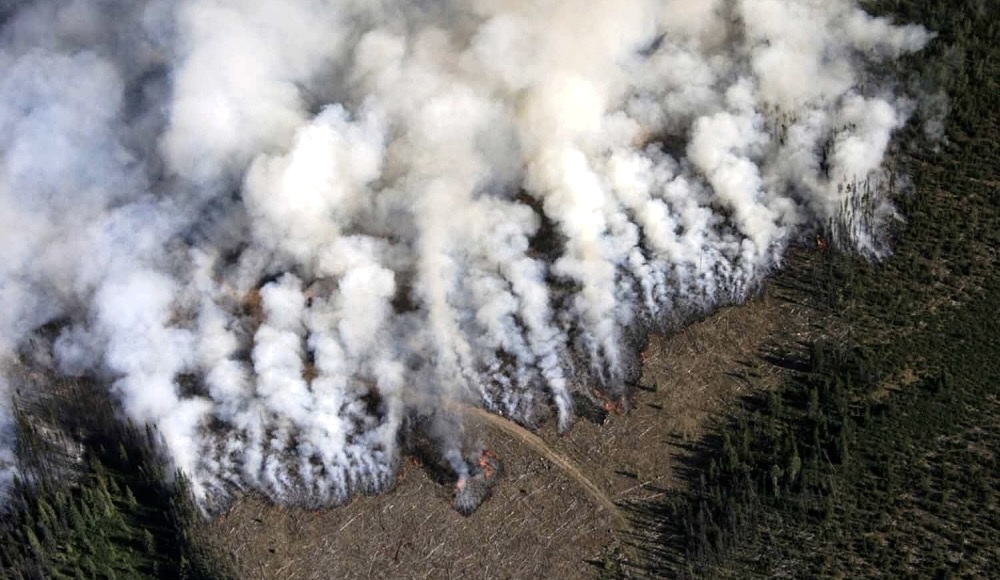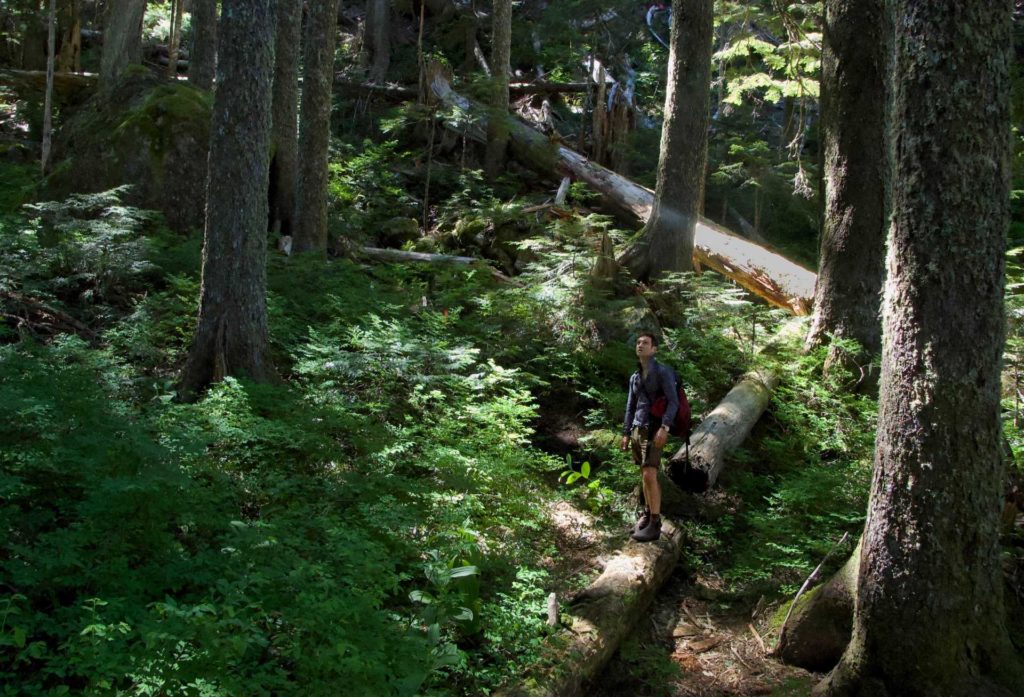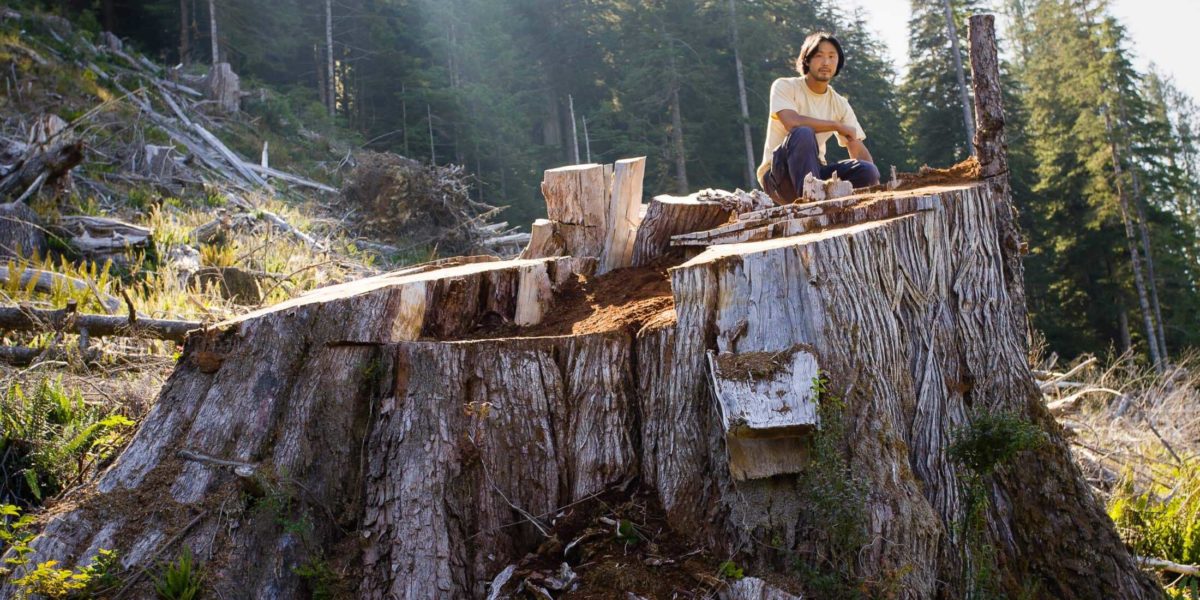The Canadian logging industry claims that they are practicing “sustainable forestry.” They are not. The stakes of allowing this deliberate deception are high. The UN’s Intergovernmental Panel on Climate Change (IPCC) and their Intergovernmental Science-Policy Platform on Biodiversity and Ecosystem Services (IPBES), are certain that biodiversity loss and climate change, which are driven by the degradation of forests, “will lead to organised human life becoming untenable within 100 years.”

In plain language, that means societal collapse in our children’s lifetimes. We are at a crossroads where we must reign in corporate greed or die.
Luckily, there is a simple legislative solution, which is to ban clearcutting immediately, and a proven alternative, which is to develop a reciprocal relationship with our forests. This involves only harvesting wood in such a way that does not degrade their ecological and economic functions.
Why clearcutting is unsustainable
The giant logging corporations that control 80 per cent of B.C.’s annual cut see trees as “fibre.”
Forest ecologist Suzanne Simard, author of Finding the Mother Tree, encourages us instead to look at trees as extended family. She also encourages us to value the forest’s “ecosystem services” including carbon sequestration, and the moisture regulation that has always kept us safe from extreme wildfires and floods.
Ecosystem services are provided by forest “biomass” including trees, moss, lichen, fungal mycorrhizae, birds, fish and animals.

Clearcutting strips 100 per cent of the above-ground biomass.
When the sun hits the unprotected forest soil, the underground biomass is incinerated. In his book Entangled Life, biologist Merlin Sheldrake tells us that underground mycorrhizal fungal networks make up over a third of the living mass of soils, and sequester 6 billion tonnes of carbon annually, equivalent to all the U.S.A.’s C02 emissions.
Sheldrake notes, “Logging wreaks havoc below ground, decreasing the abundance of mycorrhizal fungi by as much as 95 per cent, and their biodiversity by as much as 75 percent.”
Averaged over a 60 year recut cycle, clearcuts reduce total local biomass and ecosystem services by 70 per cent.
And then the trees are re-cut again!
The logging corporations claim that they are “not practicing deforestation.” No one would buy their lumber if they did. Yet clearcutting results in permanent forest degradation, which does at least 70 per cent the ecological damage of “deforestation.”
In British Columbia, we degrade a forest area the size of Vancouver Island by 70 per cent every 22 years. That’s a lot of ecosystem services to lose.
That’s a lot of fires and floods coming our way.
How clearcutting causes extreme fires and flooding
UBC forest scientists Younes Alila and Xu Jian Joe Yu have shown that reducing forest canopy by only 11 per cent in a watershed doubles the flood risk and increases intensity. Clearcutting 50 per cent of the forests in the watersheds above Merritt removed the protection that kept the town flood-free since 1893.
The floods were not caused by the amount of rain that fell, which was less than what fell during the Great Storm of 2007, but the lack of a forest “sponge” to absorb it.
The sheer volume of land degraded by industrial clearcutting has caught up with us and pushed us over the tipping point. By removing so many billions of tonnes of water-absorbing forest biomass, clearcutting has turned our province into a tinderbox.

The cumulative effect of clearcutting in the last 20 years has also ramped up the frequency and severity of extreme wildfires, which incubate and accelerate in jammed monoculture plantations and dried out clearcuts. As David Broadland explains in his article Clearcut logging increases fire risk on the Evergreen Alliance forestry website, “Carbon emissions from forest fires are on track to double every 9 years since 1990.”
By causing fires to release up to 20 times the C02 that they did 20 years ago, clearcutting has become the worst emitter of net C02 in B.C. The Sierra Club estimated the 2017 carbon footprint of the logging industry to include four to eight million tonnes of C02 from slash burning, 42 million tonnes from harvesting, 40 million tonnes from the cumulative sequestration loss of biomass removal, and 190 million tonnes from wildfires over the historical baseline. This totals to almost 276 million net tonnes of C02, three times the 67 million tonnes we emitted by burning fossil fuels.
The B.C. government doesn’t count these numbers against our provincial carbon footprint, and report author Jens Wieting said, “B.C.’s forest management is making climate change worse.”
Is this destruction of biomass sustainable? No, and the logging industry knows it.
Here is their own infographic, which estimates the permanent loss of marketable biomass and timber available for future generations to be 60 per cent, and economic value per hectare by 90 per cent.
What truly sustainable forestry looks like
Since 1890, the Menominee Nation in Wisconsin have harvested billions of board feet of lumber, but their forest is still delivering all its ecosystem services including carbon sequestration, oxygen production, moisture regulation, and human benefits like forestry jobs.

In a forest with millions of trees, each annual ring per tree adds millions of board feet of lumber to the forest. Every year, the Menominee measure that growth over the whole watershed, and cut less.
They never cut their “principal,” only the “interest,” using “single tree selective harvesting” to maintain full age and species ranges. The canopy is gently opened to stimulate growth.
I call this “Net Zero Forestry,” as there is zero net loss of biomass, canopy or ecosystem services when measured annually in watersheds.
Measuring biomass annually in watersheds is a simple metric by which forestry can be judged scientifically. Any forester can follow the instructions. Scientists can track results. Governments can’t fudge the numbers.
We miss out on these benefits because the corporate logging industry protects their $70 billion annual revenue stream by manipulating our governments into perpetuating the dysfunctional “Tenure System.” In this system, wood is given away to corporations for 10 cents a board foot, which consumers will eventually pay prices like $4.00 a board foot for.

The province of B.C. loses over a million dollars a day on the logging industry, before we count the constant bailouts like the $300,000 compensation paid for one logging-flooded home, to the $9 million spent on the RCMP to crush peaceful biodiversity and climate change activists at Fairy Creek, to the $9 billion costs of rebuilding after the Merritt and other floods.
In contrast, the Menominee own their own sawmills, control their own jobs, and sell their value-added wood products at wholesale and retail.
Grand Chief Stewart Phillip, President of the Union of BC Indian Chiefs, does not see forests as “fibre.” He suggests, “What governments and corporations need to do is to view old growth forests not as commercialised products to be harvested and sold, but as bedrock foundations of a healthy, biodiverse environment that First Nations have been stewards over since time immemorial.”
At the stroke of a pen, dissolving the Tenure legislation and banning clearcutting would shift us into a new paradigm of maintaining a reciprocal, respectful relationship with forest ecosystems.
With the money saved by retaining ownership of the trees until they are sold to retail, we could generate billions in provincial revenue, and double our forestry jobs putting people to work healing the terrible damage we have done to our forests.
Legislation is free. We just ban clearcutting, stop cutting old growth, and start practicing forestry, instead of land degradation.




